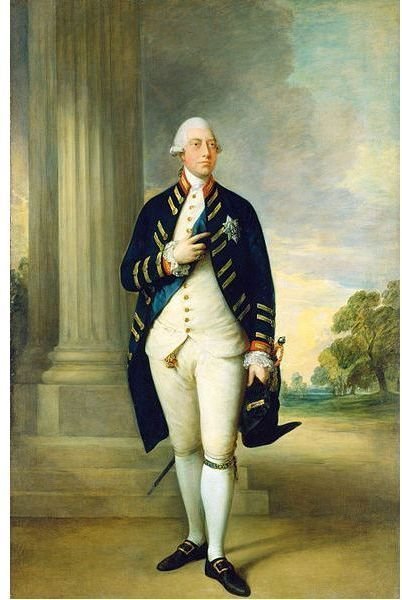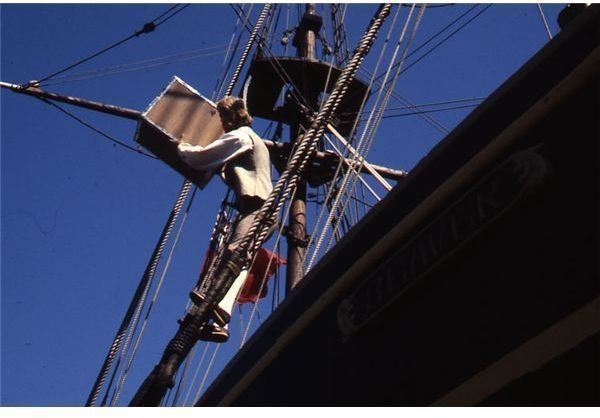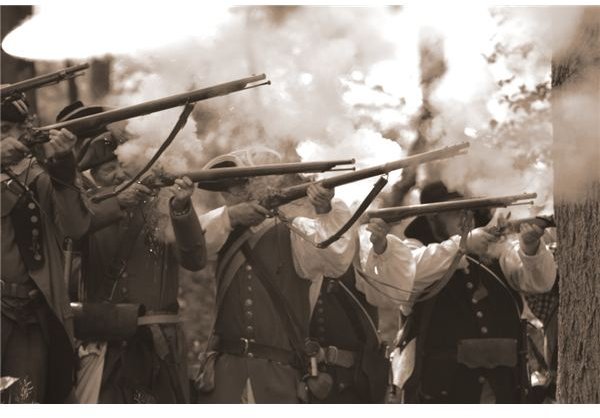The Buildup to the American Revolutionary War: Causes
The Seven Years’ War
In the 18th century, North America was under the control of England, France and Spain. France desired to connect its holdings in Canada and Louisiana by seizing the Ohio Valley. England wished to expand its coastal colonies westward and feared being pressed between French territory and the Atlantic.
This conflict was part of a larger struggle taking place in Europe. England allied itself with Prussia while France and Austria united against them. All other European states took sides in what became a colonial battle for India, Africa, the Caribbean, and North America. Around a million people died in Europe. This was the first global war.
American history refers to the conflict as the French and Indian War because the Native Americans allied with the French to stop British expansion. The British had the advantage in numbers, while the French had organizational and geographic strengths. French territory was accessible only by the Mississippi or Saint Lawrence rivers and was protected by harsh Canadian terrain. France had the assistance of the local people and was controlled by only one governor in North America. England’s territory was composed of thirteen independent colonies with separate governments who rarely agreed and were not concerned with each other’s defense.
From 1754 to 1763, battles took place across the globe. At the end of it all, Prussia took control of neighboring territory that became modern Germany. England won India and most of North America. Spain held New Orleans and territories to the west. France retained small parts of its Caribbean and African empire.
The Costs of War

A series of British laws followed the Seven Years’ War, limiting the freedom and squeezing the economy of the thirteen American colonies. Colonists thought victory over the French in the Ohio Valley would allow them to expand westward. In 1763, King George III prohibited any settlement of lands west of the Appalachian Mountains and ordered any settlers there to move east. This was to ease tension with the Native Americans, who had fought in vain against the British invasion.
At the end of the war, England was exhausted and financially strapped. It controlled vast stretches of the planet but need the funds to maintain it. To generate the necessary capital, England imposed new taxation on its American colonies.
New Taxes
The Sugar Act was passed in 1764, increasing the duties payed on sugar as well as coffee, textiles, wines and dyes. It prohibited importation of French wines and foreign rum. This was was one of the facets of the British mercantile system, which built a monopoly designed to enrich the crown.
The British Parliament then reorganized the American custom system to ensure taxes were being properly collected. A court was established in Halifax, Nova Scotia, to resolve all taxation issues.
The Currency Act was also passed in 1764, forbidding the colonists from issuing their own paper money, which hampered colonial commerce from north to south, but protected British interests.
At a town meeting in Boston, James Otis raised the issue of Taxation without Representation. He published a paper called: “The Rights of the British Colonies Asserted and Proved.” Boston merchants began a boycott of British luxury goods.
The Stamp Act was passed in 1765. All printed goods, from pamphlets to playing cards, were taxed and required an official seal. The proceeds from the Stamp Act paid for the British military presence in the colonies. At the same time, the Quartering Act was enacted, requiring colonists to supply their occupiers with room and board.
Colonial Uprising
Protest Against Taxes
Community leaders throughout the colonies rose up against both acts. In Virginia, Patrick Henry presented the colonial government with his Virginia Resolutions, asserting that only Virginia can tax Virginia residents. At the same time, the Sons of Liberty formed in New York in opposition to the Stamp Act. They intimidated British stamp agents to resign and influenced New York merchants to boycott British goods.
The Stamp Act Congress, with representatives from nine colonies, convenes in New York City to prepare a resolution to be sent to King George. The congress insists that England has no right to tax them or otherwise enforce laws upon them without proper representation in parliament.
On November 1, 1765, the Stamp Act officially begins. Most daily business in the colonies come to a halt as citizens refuse to use the stamps. No legal documents, licenses or magazines are produced. In New York City, an effigy of the British governor is burned as part of violent demonstrations.
Boycotting of British merchandise increases. The commander of British forces in America, General Thomas Gage, implores the New York assembly to comply with the Quartering Act and house his troops. The assembly refuses.
Benjamin Franklin addresses Parliament urging them to repeal the Stamp Act and warning them that revolution may be the consequence. In March of 1766, King George complies. Boycotting of British goods relaxes.
Non-compliance to the Quartering Act in New York leads to increasing violence. At the end of 1766, England suspends New York’s legislature and enforces martial law.
In 1767, the Townshend Revenue Acts are put into law, taxing products such as paper, tea and glass. A colonial customs board is established in Boston to enforce the taxation. The boycotting resumes.
In 1768, Sam Adams circulates a letter urging the colonies to unite against taxation without representation. England orders colonial governors to refute the letter, but one by one colonial assemblies endorse it.
British customs officials beg England to protect them from constant harassment and threats from the colonists. In May of 1768, a British warship armed with 50 cannons sails into Boston Harbor. In June, a customs official is locked aboard a sloop owned by John Hancock while imported wine is off-loaded without the duties being paid. In July, the colonial government of Boston is dissolved when they refuse to deny Adams’ letter. In town meetings, Bostonians are urged to arm themselves. That September, more warships arrive and two regiments of infantry take position in Boston.
Tensions and boycotts increase. The colonial governments grow closer together. It all explodes in 1770. Sons of Liberty clash in New York with British soldiers, resulting in several injuries. March 5 in Boston, British soldiers open fire on a group of colonists, killing five and injuring six.

The Boston Tea Party
In 1773, the Tea Act takes effect, increasing taxes on tea and creating a monopoly for the East India Company, which was nearly bankrupted by boycotting. Colonial merchants are cut out of the tea business.
In October, a committee forms in Philadelphia to discuss the Tea Act. They unite against it and call for the resignations of British tea agents in Philadelphia. The next month, Boston endorses the actions of the Philadelphia committee and attempts to oust local tea agents. England responds by sending three tall ships full of tea into Boston harbor. They demand that the product is purchased and the taxes are paid. The colonists refuse and insist the ships return to England without payment. The ships will not go and the colonists will not pay. For weeks, Boston Harbor is at a standstill.
December 16, 1773, a group of 8000 Bostonians hear Sam Adams repeat the orders of the Royal Governor, that the tea taxes must be paid. That night, a group sneaks aboard the three ships and dumps 342 chests of tea into the harbor. The ensuing Boston Port Bill shuts down the harbor until the taxes are paid and the East India Company is reimbursed.
The Shot Heard Around the World
In September, 1774, the First Continental Congress convenes in Philadelphia with 56 delegates. The congress asserts colonies’ rights to self-rule and uniformly opposed England. The urged the formation of local militia and resistance to all British tyranny.
April 19, 1775, the first shots of the Revolutionary War were fired and a nation was born.
References
- The History Place: American Revolution http://www.historyplace.com/unitedstates/revolution/rev-prel.htm
- French and Indian War http://www.history.com/topics/french-and-indian-war
- Photo of the Boston Tea Party by City of Boston Archives under CC BY 2.0 via Flickr
- Proclamation of 1763 http://www.ushistory.org/declaration/related/proc63.htm
- The American Revolution http://www.history.com/topics/american-revolution
- Portrait of King George III by Thomas Gainsborough [Public domain], via Wikimedia Commons
- Photo of French and Indian War Reenactment by melissa_rae_dale under CC BY 2.0 via Flickr
